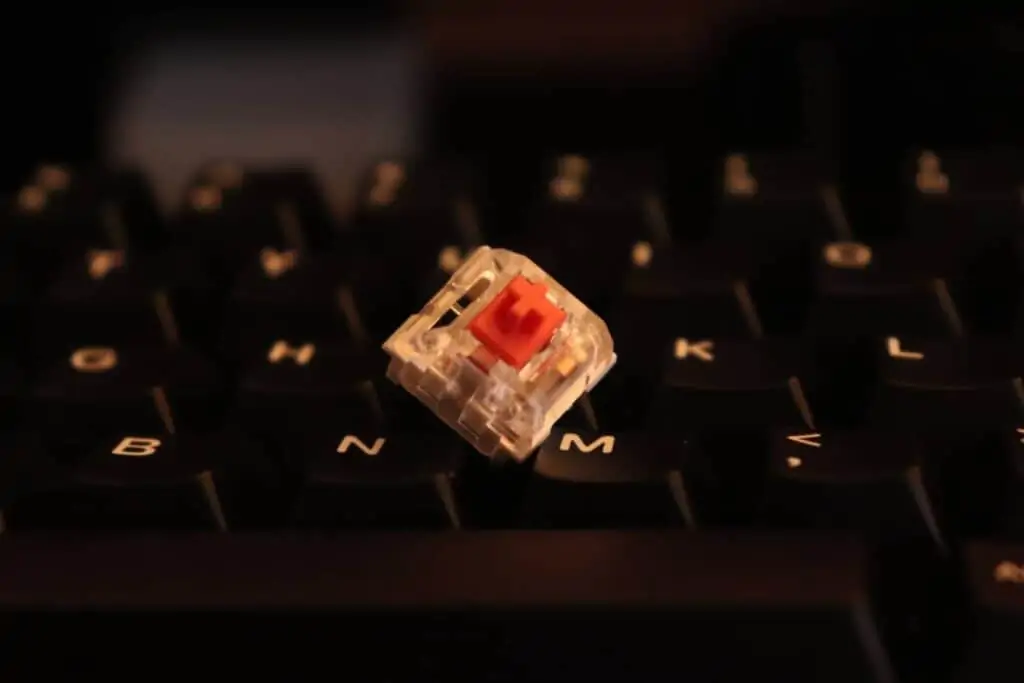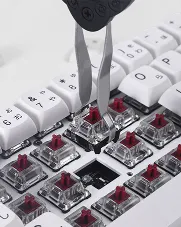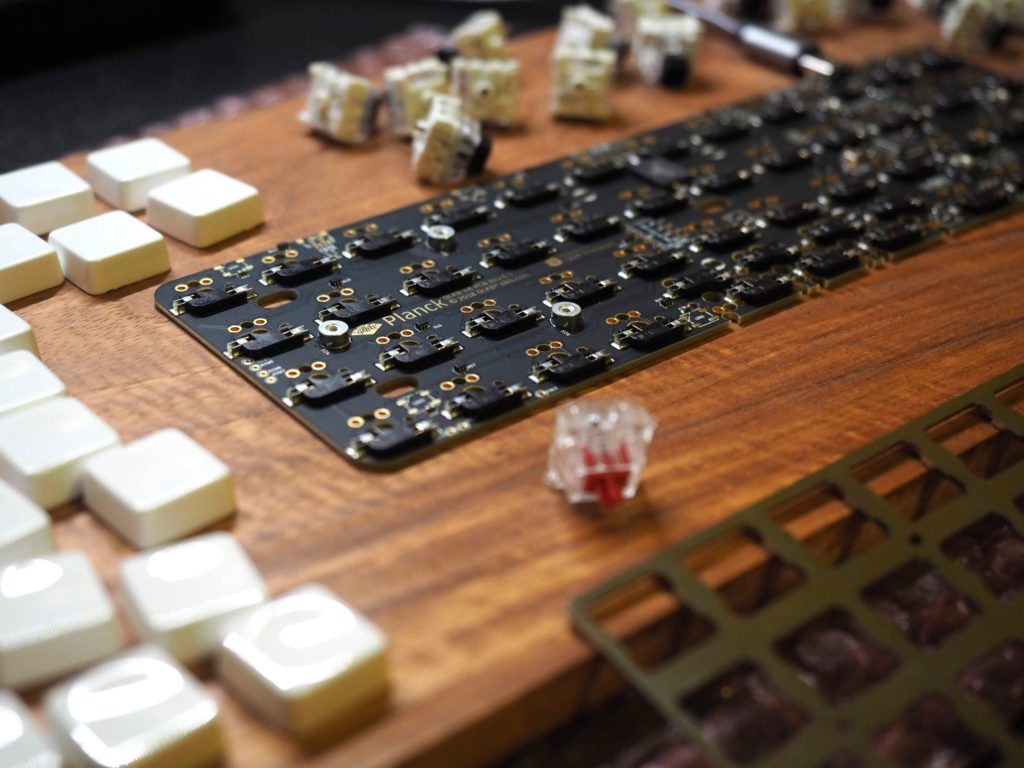- Understanding 75% Keyboards
- Benefits of 75% Mechanical Keyboards
- Exploring Key Layouts and Ratios
- The Appeal of 75% Mechanical Keyboards
- Choosing the Right Compact Keyboard
- Pros and Cons of 75% Keyboards
- Comparison of Keyboard Sizes
- Customization of Compact Keyboards
- Maintenance and Cleaning of 75% Keyboards
- Closing Thoughts
- Frequently Asked Questions
Ever wondered about the number of keys on a 75% keyboard? You’re in for a surprise! Despite its compact form, a 75% keyboard typically boasts around 84 to 87 keys, offering an optimal balance between functionality and space-saving design. This layout includes the essential alphanumeric keys, function row, navigation cluster, and arrow keys while omitting the numpad and excess function keys. Let’s dive into the intricacies of this versatile keyboard size and explore its benefits for both productivity and gaming.
Understanding 75% Keyboards
The key count is a crucial aspect. These compact keyboards are designed to offer a balance between functionality and space-saving benefits. Despite their smaller form factor, 75% keyboards provide an adequate number of keys for most users’ needs.
The typical 75% keyboard consists of approximately 84 keys, including modifiers, function keys, and arrow keys. This layout retains essential functionalities while omitting the numeric keypad and some other less frequently used keys found on full-sized keyboards.
Understanding the functionality of each key on a 75% keyboard is vital for users transitioning from larger layouts. While the overall count may seem reduced compared to full-sized models, these compact keyboards maintain practicality by retaining all primary functions within reach.
Benefits of 75% Mechanical Keyboards
Space Efficiency
A 75% keyboard is designed to maximize desk space with its compact size. It typically includes 84 keys, which is notably fewer than a full-sized keyboard. This makes it ideal for environments where space is limited, such as small desks or workstations in shared offices. The smaller footprint allows users to have more room for other peripherals or simply declutter their workspace.
Moreover, the compact design of a 75% keyboard also benefits individuals who prefer having their mouse closer to the typing area. With less distance between the keyboard and mouse, users can experience improved ergonomics and efficiency while working.
Portability Advantage
Compared to larger keyboards, a 75% mechanical keyboard offers significant portability advantages. It strikes a balance between being compact enough for easy transportation and retaining essential functionality for daily use. This makes it an excellent choice for professionals who frequently travel or work in multiple locations.
The reduced size of a 75% keyboard enhances its travel-friendly features without compromising on key spacing and comfort during typing sessions.
Function Layer Utility
One of the standout features of a 75% mechanical keyboard is its function layer utility. By utilizing function layers, users can access additional commands and shortcuts without sacrificing key functions. This provides customization options that enhance productivity by allowing quick access to various functions like media controls, volume adjustment, or even custom macros tailored to specific tasks.
With these customizable function layers on a 75% mechanical keyboard, users can streamline their workflow and perform tasks efficiently without relying solely on dedicated keys.
Exploring Key Layouts and Ratios
Standard Layout Comparison
The 75% keyboard typically features 84 keys, including the function row at the top. In contrast, a standard full-sized keyboard has 104 keys. This means that a 75% keyboard is more compact and space-saving compared to its larger counterparts. However, despite having fewer keys, the 75% layout still retains essential functions like arrow keys and navigation clusters.
When comparing the standard layout of a 75% keyboard with other sizes, it’s important to understand the similarities and differences in key arrangements. For instance, both 60% and 65% keyboards lack dedicated function rows but may have additional layers accessible through modifier keys. On the other hand, full-sized keyboards include dedicated numpads which are absent in smaller layouts like the 75%.
Compatibility considerations for standard layout comparisons involve understanding how different key layouts can impact user experience based on individual preferences and usage scenarios.
Custom Layout Options
Customizing key arrangements on a 75% keyboard offers numerous benefits such as enhanced ergonomics or optimized workflow efficiency tailored to specific tasks or software applications. For example, users who frequently utilize shortcut commands in graphic design software might benefit from remapping certain keys for quicker access.
Personalization possibilities with custom layouts extend beyond functionality to aesthetics as well. Some users opt for custom keycap sets featuring vibrant colors or translucent designs that complement their preferred RGB lighting setups.
Exploring custom layout options empowers users to create personalized configurations that align with their unique needs while maximizing utility within the constraints of a compact form factor.
The Appeal of 75% Mechanical Keyboards
Their aesthetic versatility is a major draw. These compact keyboards offer a wide range of customization options, allowing users to enhance the visual appeal according to their preferences. From customizable keycap sets to vibrant backlighting options, these keyboards provide ample opportunities for personalization.
Customization options for 75% keyboards include different keycap materials such as PBT or ABS plastic, various color combinations, and unique legends or symbols on the keycaps. Users can also opt for artisan keycaps that feature intricate designs and textures, adding a touch of individuality to their keyboard setup.
Popular design trends in compact keyboard aesthetics include minimalistic layouts with sleek bezels and clean lines. Retro-inspired colorways and themed keycap sets have gained popularity among enthusiasts seeking a distinctive look for their 75% mechanical keyboards.
Performance Features
In addition to their visual appeal, mechanical keyboards offer performance-enhancing features that cater to both gaming and typing needs. The advantages of specific features such as programmable keys, dedicated macro functionality, and high-quality switches contribute to an improved user experience across various applications.
The tactile feedback and actuation force of mechanical switches make them ideal for prolonged typing sessions while providing gamers with precise input recognition during intense gameplay. Furthermore, the inclusion of advanced firmware customization options allows users to fine-tune keystroke behavior based on individual preferences.
Performance-focused design elements like anti-ghosting technology ensure that every keystroke is accurately registered even during rapid inputs in fast-paced gaming scenarios.
Choosing the Right Compact Keyboard
It’s crucial to consider how well it matches your lifestyle. Whether you’re a gamer, programmer, or writer, the benefits of using a compact keyboard can vary based on your habits and activities.
For instance, if you’re constantly on the go and need a portable setup for work or gaming, a 75% keyboard offers the ideal balance between functionality and space-saving design. It’s also suitable for individuals with limited desk space who still require efficient typing capabilities.
Considering user habits is essential when selecting a specific keyboard size. If you find yourself frequently switching between tasks that demand both number input and text editing, then having quick access to both functionalities without compromising desk real estate makes the 75% layout an attractive choice.
Pros and Cons of 75% Keyboards
A 75% keyboard typically has around 84 keys, offering a balance between compactness and functionality. This size provides more keys than a 60% keyboard while maintaining a smaller form factor than full-sized keyboards. Users who prefer minimalistic setups but still require dedicated arrow keys and function row find this layout very appealing.
The compact size of the 75% keyboard makes it an ideal choice for users with limited desk space or those who frequently travel with their keyboards. Despite its smaller footprint, it retains essential keys for most tasks, making it versatile for both work and gaming purposes. The reduced width allows users to keep their mouse closer to the typing area, promoting better ergonomics during extended use.
Limitations Discussion
While the compact nature of a 75% keyboard offers advantages, some limitations should be considered before making a purchase decision. The condensed layout may take time for users accustomed to larger keyboards to adjust due to differences in key placement and sizing. Some users may find that certain functions usually accessible on larger layouts are either absent or require secondary key combinations on a 75% keyboard.
Practical considerations such as hand size can also influence user experience with these keyboards. Individuals with larger hands might find the reduced spacing between keys uncomfortable over prolonged use compared to standard or full-sized options. Moreover, customizing keycap sets or finding compatible accessories like wrist rests could be more challenging due to non-standard layouts.
Comparison of Keyboard Sizes
Full-Sized vs Compact
Full-sized ones typically have around 104 keys, including the number pad. They are suitable for tasks that involve extensive numerical input, such as accounting and data entry. On the other hand, compact keyboards like the 75% size eliminate the number pad and some function keys to save space. This makes them more portable and allows for a more ergonomic typing position.
Choosing between full-sized and compact keyboards depends on your specific needs. If you require a dedicated number pad or frequently use macros and shortcuts, a full-sized keyboard might be more suitable. However, if you prioritize desk space or need portability, a compact keyboard like the 75% size would be more convenient.
TKL and 75% Differences
Differentiating between Tenkeyless (TKL) and 75% keyboards is essential when considering which one suits your requirements best. While both eliminate the number pad found in full-sized models, size differences lie in their layouts – with TKL having around 87 keys while 75% has approximately 84-87 keys.
The reduced layout of both TKL and 75% keyboards means less reach for your mouse hand during gaming or general computer use compared to full-sized options. The smaller footprint also provides additional room for mouse movement on your desk surface.
Customization of Compact Keyboards
Keycap Varieties
When customizing a 75% keyboard, keycap varieties play a crucial role. These keyboards offer various keycap options, such as PBT, ABS, and even double-shot keycaps. The material used can impact the durability and texture of the keys. For instance, PBT keycaps are known for their durability and resistance to shine from oils on fingertips.
Moreover, users can choose different profiles for their keycaps. Common profiles include OEM, Cherry, SA, DSA, and XDA. Each profile offers a unique feel and typing experience based on its shape and height.
The design aspect also allows users to personalize their compact keyboards further by selecting from an array of designs like classic black-on-white or vibrant RGB backlit keycaps that enhance aesthetics while providing better visibility in dim environments.
Switch Selections
Selecting suitable switches is another critical aspect when customizing a 75% keyboard. Users have the freedom to pick from various switch options, including but not limited to linear switches (e.g., Cherry MX Red), tactile switches (e.g., Cherry MX Brown), or clicky switches (e.g., Cherry MX Blue).
Factors influencing switch selection encompass user preferences regarding actuation force required for keystrokes, tactile feedback during typing sessions, noise levels produced by the switch type chosen — all contributing to an individual’s overall typing experience with the compact keyboard.
It’s important to note that these customization possibilities empower users to tailor their compact keyboards according to personal preferences in terms of both aesthetics and functionality.
Maintenance and Cleaning of 75% Keyboards
Regular Upkeep Tips
Maintaining a 75% keyboard is essential for its longevity. To keep it in optimal condition, regular cleaning is crucial. Dust and debris can accumulate between the compact keys, leading to malfunctions. Use a small brush or compressed air to remove any particles that may have settled between the keys. Wiping the keys with a damp cloth can help prevent dirt buildup.
To extend the lifespan of your compact keyboard, consider investing in a keycap puller. This tool allows you to safely remove the keycaps for thorough cleaning without damaging them or the switches underneath. By providing proper care and maintenance, you can ensure that your 75% keyboard remains functional and responsive for an extended period.
Longevity Practices
Several factors impact the longevity of compact keyboards, including usage habits and environmental conditions. Proper typing techniques are essential for preventing premature wear on the keys and switches. Avoiding spills and exposure to moisture is crucial for maintaining optimal functionality.
Furthermore, incorporating protective measures such as using a keyboard cover when not in use can shield it from dust and accidental spills, contributing to its durability over time. By implementing these practices and regularly cleaning your 75% keyboard, you can maximize its lifespan while ensuring smooth data entry experiences.
Closing Thoughts
You’ve now delved into the world of 75% mechanical keyboards, understanding their layouts, benefits, and customization options. These compact yet powerful peripherals offer a balance of functionality and space efficiency, making them a compelling choice for both work and play. As you weigh the pros and cons and consider your personal preferences, remember that the right keyboard is not just a tool but an extension of your creativity and productivity.
Now armed with knowledge about 75% keyboards, it’s time to find the perfect fit for your needs. Whether you’re drawn to their sleek design, customizable features, or ergonomic advantages, take the next step in exploring and selecting the ideal 75% mechanical keyboard that resonates with your unique style and usage. Your perfect compact keyboard might just be a few clicks away!
Frequently Asked Questions
How many keys does a 75% keyboard have?
A 75% keyboard typically has around 84 to 87 keys, including the essential alphanumeric keys, function row, and navigation cluster. Despite its compact size, it retains most of the functionality of a full-sized keyboard.
What are the benefits of using a 75% mechanical keyboard?
A 75% mechanical keyboard offers a balance between compactness and functionality. It provides a smaller footprint while retaining crucial keys for efficient typing and gaming. It allows for more ergonomic mouse positioning due to its reduced width.
Can I customize key layouts on a 75% mechanical keyboard?
Yes, many 75% keyboards support keycap customization and remapping through software or DIP switches. This flexibility enables users to personalize their layout according to their preferences or specific usage scenarios.
What are the maintenance requirements for a 75% mechanical keyboard?
Regular maintenance involves cleaning the keycaps and chassis with compressed air or gentle cleaning solutions to prevent dust buildup. Lubricating stabilizers can help maintain smooth keypresses over time.
Are there any drawbacks to using a 75% keyboard?
The main drawback is adjusting to the compact layout if you’re used to larger keyboards. Some users may miss dedicated function keys or find certain tasks less convenient without them.


